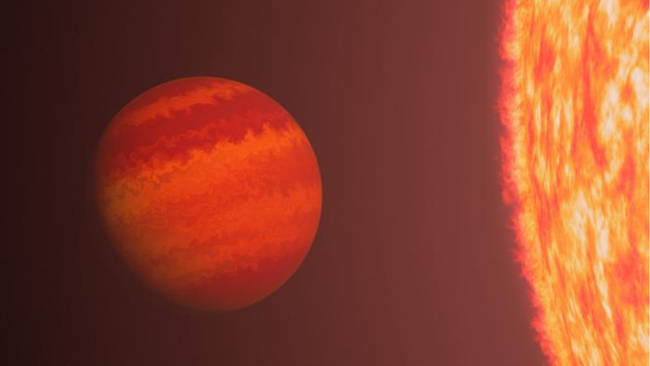Discovery Challenges Models of Planet Formation and Evolution, Reveals Possible Future for Earth
NASA's TESS satellite has discovered an unusual exoplanet nicknamed “Phoenix” that challenges our understanding of planet formation and evolution.
Despite being extremely close to its parent star, the red giant TIC 365102760, Phoenix still has an atmosphere. This puzzles astronomers, as such planets typically lose their atmospheres due to the intense radiation emitted by their stars.
«Phoenix» belongs to the class of «hot Neptunes», which have radii exceeding those of Earth, but less than the radius of Jupiter and rotate close to their stars. Unlike the ice giant Neptune in our solar system, hot Neptunes are heated by radiation from their stars.
Despite its age of about 10 billion years, TIC 365102760 b, as the planet is officially designated, has an unusually low density and is the smallest exoplanet ever discovered around a red giant star.
Given its age and proximity to its star, astronomers assumed that the planet should be devoid of an atmosphere. However, this exoplanet preserved it, which calls into question existing models of planet formation and evolution.
«This planet is not developing as we expected. It appears to have a much more massive and less dense atmosphere than we would expect for such systems», — said lead study author Sam Grunblatt, an astrophysicist at Johns Hopkins University.
Astronomers suggest that unknown processes may play a role in protecting Phoenix's atmosphere. Understanding the evolution of this exoplanet could help astronomers predict what will happen to Earth's atmosphere. when our Sun turns into a red giant in 5 billion years.
The Sun will expand into the orbit of Mars, consuming the inner planets, including Earth. But by studying Phoenix's atmosphere, astronomers can gain insight into how Earth may maintain its atmosphere during this process.
«We do not understand very well the late stage of evolution of planetary systems. Perhaps the Earth's atmosphere will not be destroyed exactly as we thought, — said Grunblatt.
The discovery of TIC 365102760 b demonstrates TESS's capabilities in detecting small exoplanets. TESS typically sees larger, denser planets better due to the dips in light they cause as they cross the surfaces (transit) of their stars.
The method developed by Grünblatt and his colleagues makes it possible to detect smaller planets through careful processing of data. They've already used this method to observe dozens of smaller exoplanets, and their hunt continues.
«Phoenix» and similar exoplanets expands understanding of exoplanet diversity and challenges current models of planet formation and evolution. Continued research may provide valuable information about the future of our own planet.

